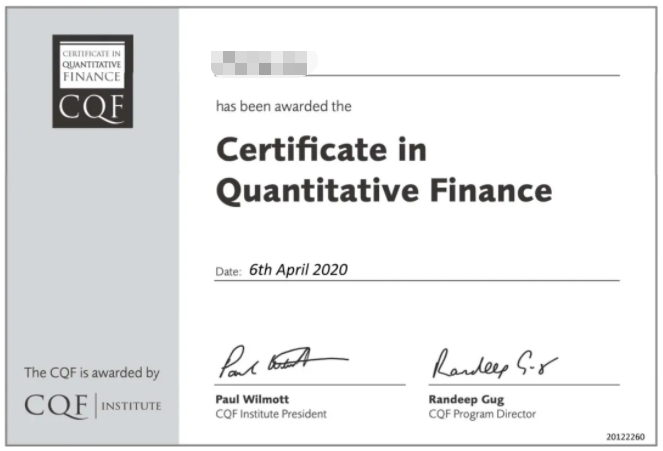In the first part of this series, I focused on the reasons for considering environmental, social, and governance (ESG) issues in investing, as discussed in the CFA Institute online discussion forum “ESG Issues in Investing: What, Why, and Why Not,”on 27 June. In this second and final part, I examine why many investors seem unable or unwilling to systematically consider these issues in their investment decision-making process.

To remind our readers, we had five distinguished panelists: Amy Domini, founder and CEO of Domini Social Investments; Andrew Canter, CFA, CIO of Futuregrowth; Jeroen Bos, CFA, head of global equity research at ING Investment Management; Raj Thamotheram, a strategic adviser on long-term wealth creation; and Roger Urwin, global head of investment content at Towers Watson.
ESG Issues Do Not Receive Due Consideration
There was agreement within the panel that ESG issues are not receiving due consideration among institutional investors. This is perplexing. If there is no disagreement that ESG issues need to be factored into investment decisions for economic reasons, why are they not receiving the attention they deserve?
Our panel members pointed out different reasons. These include: ESG issues are difficult to assess, ESG-related disclosure by companies may be limited and non-standardized, and ESG issues tend to influence financial performance in the long term whereas investors often have relatively short-term horizons.
At the same time, panel members felt that the situation is changing for the better. Bos pointed out that many institutional investors have signed onto the United Nations-backed Principles for Responsible Investment, which require integrating ESG considerations into investments.
There is, however, one point which continues to recur in the discussions on why ESG issues do not receive enough attention: fiduciary responsibility. Could the lack of systematic consideration of ESG issues by institutional investors also be rooted in concerns related to their fiduciary responsibility?
Fiduciary Responsibility and ESG Considerations
Urwin clarified that the legal interpretation of fiduciary duty varies from country to country and thus is difficult to generalize. He was of the view that the case law that is often cited to argue that ESG considerations run counter to fiduciary responsibility is outdated and does not speak to the present or the future. He believes that to make progress there is no substitute for funding governing bodies that debate and then reach a clear view on the fiduciary duty and document their deliberations and their resolutions.
Canter thought that fiduciary institutions risk failing in their fiduciary duty if they ignore relevant risk-return indicators like ESG issues. At the same time, he was also critical of the view that if institutional investors do not have a very long-term perspective, they are failing clients and society. He argued that a fiduciary duty must be willingly taken on rather than imposed, and it cannot relate to something the fiduciary has little if any control over — climate change, for example.
The reasoning underlying fiduciary responsibility is inevitably linked to what effect ESG considerations have on the financial performance of investments.
ESG Consideration and Financial Performance
Bos pointed out that there is a lingering misperception that considering ESG issues only means applying exclusionary screening — that is, limiting the investable universe on moral grounds. Fiduciary institutions are required to act in the best interest of their clients and exclusionary screening could be seen as reducing return or increasing risk.
In the past, exclusionary screening may have been the primary, if not the only, ESG methodology, but things have since evolved. Now, in addition to (or in substitution of) exclusionary screening, investors use a combination of methodologies, such as best-in-class, engagement, ESG integration, and impact investing. Although the reality of ESG methodologies has progressed, the perception has not caught up.
Canter cautioned against equating ESG considerations with traditional socially responsible investing. He emphasized that fiduciary institutions investing other people’s money ought not to be “tempted to compromise returns for social impact,” and in the realm of doing good, you must also “do well” by your clients — or you won’t have any.
Domini argued that the relative outperformance of the first ever ESG index, which she conceived — the Domini 400 Social Index, now the MSCI KLD 400 Social Index — shows that the “primary financial case for using ESG research” is indeed financial performance.
Would misperception regarding ESG issues and financial performance change as more data and performance studies become available?
ESG Considerations: Evidence vs. Perception
The panel was not convinced that more evidence would be enough to change the mindset of ESG naysayers. Thamotheram embraced the view that the models and theories often used in finance, be it the capital asset price model (CAPM) or the efficient market hypothesis (EMH), are not necessarily grounded in empirical evidence but are still widely held.
Urwin also noted that there is a natural preference for the status quo. Even if there is sufficient evidence in favor of considering ESG issues in investments, many investors may continue to not pay sufficient attention to them.
The matter is further complicated by the fact that in investments the past cannot be generalized to the future, and it is impossible to statistically prove a forward-looking investment hypothesis in financial markets.
On the bright side, the investors who pay due attention to ESG issues may be able to beat their benchmarks. For this to happen, these investors need to identify companies that are early adopters of sustainability programs and are positioned well for upcoming regulatory and policy changes.
Regulation and Externalities
In the ESG issues and financial performance debate, does it matter if governments discourage externalization of costs? The panel seemed to believe it does. If there is no prospect of externalized costs coming back to the companies, there will be far less room for ESG analysis to help generate alpha.
Thamotheram said that regulation also has a role to play in persuading investors to think about ESG alpha as well as stewardship. He explained that a series of regulatory developments in the United Kingdom are encouraging investment managers who want to compete on performance but in a socially useful manner.
Another view on government regulation is that it is important in enabling ESG evaluation. If, for example, carbon footprint disclosure was mandatory, then analysts would have an important tool at their disposal for evaluating an ESG issue: the environment.
But as Domini suggested, the role of regulation is not always positive. A recent study in the United States found that conflicting guidance provided to investors about the Employee Retirement Income Security Act (ERISA) of 1974 has been confusing and counterproductive for impact investors. As governments removes barriers (for instance by issuing ERISA guidance that is helpful) and as regulations requiring disclosure emerge, the investment industry will be able to deliver a more robust analysis.
Concluding Thoughts
That ESG issues do not receive due consideration in investment decisions by many institutions is a widely held view. This is probably rooted in a complex set of issues, including economic incentives, human behavior, and the varying interpenetration of fiduciary responsibility. Things seem to be changing for the better for ESG considerations, but mainstreaming them will likely require more time and effort.
If you would like to know more about Environmental, Social, and Governance (ESG) issues in sustainable, responsible, and impact investing, please take this free eLearning course by CFA Institute: ESG-100: A Clear and Simple Introduction to ESG issues in Sustainable, Responsible, and Impact Investing.
If you liked this post, consider subscribing to the Enterprising Investor.



 行业新闻
行业新闻
 发布时间:2013-10-31
发布时间:2013-10-31











 复制本文链接
复制本文链接 模拟题库
模拟题库

 26568
26568

































 >
>